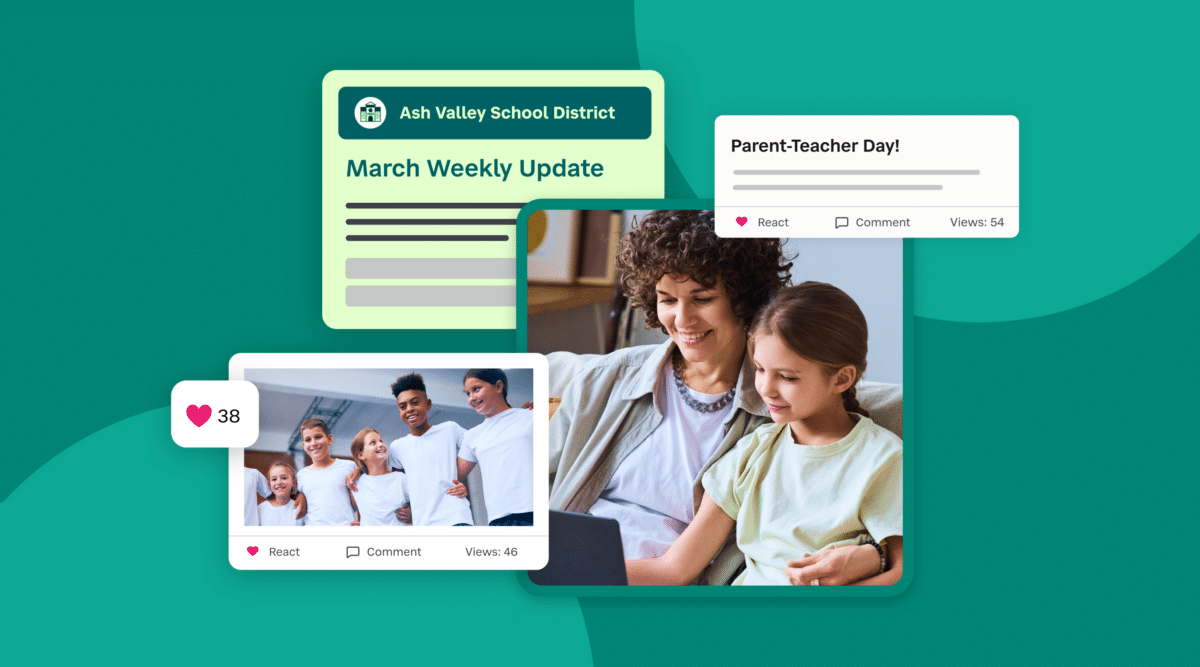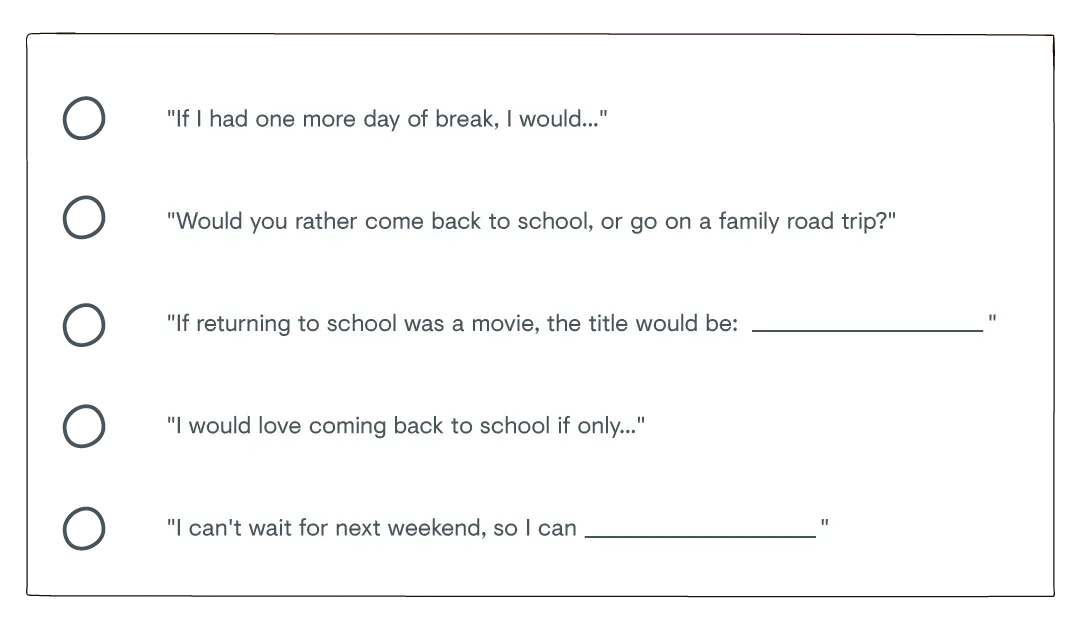

Educators and administrators alike recognize the challenge of transitioning back to the classroom environment following extended breaks. The return from Spring Break presents a special opportunity to reset expectations, rebuild classroom dynamics, and recommit to educational excellence through supporting our students. By implementing some of these best practices, schools can transform this transition period into a catalyst for improved student outcomes and academic achievement.
Acknowledge the Transition Period to Support Student Well-being
Recognizing the psychological impact of schedule disruptions is essential for fostering student success. The abrupt shift from non-school routines back to structured learning environments affects everyone in the educational ecosystem. Educational leaders who proactively address this transition create psychologically safe spaces that support student well-being and academic readiness.
Consider implementing these discussion prompts to facilitate constructive dialogue:
- How might we use our break experiences to enhance our learning community?
- What strategies can we implement to regain academic momentum efficiently?
- Which aspects of our classroom culture should we prioritize as we resume our educational journey?
Or, offer a multiple choice writing prompt to engage students with selections like:

This intentional approach acknowledges that transitions impact learning outcomes while promoting self-awareness, social-emotional development, and community building—all critical components of comprehensive student success frameworks.
Re-establish Community Connections to Enhance Learning Environments
The post-break period offers an invaluable opportunity to strengthen the learning community foundation that supports academic achievement.
Effective community-building strategies include:
- Collaborative review and refinement of classroom expectations and norms
- Structured activities that reconnect peers and rebuild interpersonal networks
- Facilitated discussions that align individual values with community standards
Consider implementing a values clarification exercise where students position themselves along a continuum regarding statements such as:
- “Educational innovation drives positive societal change”
- “Collaborative problem-solving produces better outcomes compared to individual effort”
- “Developing adaptability is more valuable than mastering static content”
These structured interactions reinforce belonging while creating the psychological safety necessary for risk-taking and intellectual growth.
Implement Progressive Learning Structures
While curricular pressures may tempt educators to accelerate immediately to full academic intensity, research on cognitive load theory suggests that a strategic, incremental approach yields better outcomes. Educational leaders who design progressive reentry plans demonstrate their commitment to both their students and instructional practices.
Consider implementing a graduated return by:
- Designing scaffolded assignments that build in complexity over the first week
- Reintroducing core academic routines with clear instruction and practice
- Providing formative assessment opportunities with immediate feedback
This measured approach to reengagement acknowledges that academic behaviors require a renewal after disruption. Districts that prioritize this progressive structure report higher completion rates and improved quality of student work following breaks.
Leverage Early Successes to Build Academic Momentum
Experiencing success increases motivation and engagement. Strategic educators capitalize on this by engineering early victories that rebuild student confidence and academic self-efficacy.
Effective confidence-building strategies include:
- Implementing low-stakes, high-engagement academic competitions
- Revisiting previously mastered content through new applications
- Creating collaborative problem-solving opportunities with achievable outcomes
These structured experiences remind students of their capabilities while reinforcing the collaborative nature of the learning community. The positive momentum generated during this reentry phase creates a foundation for sustained engagement throughout the remainder of the academic term.
Mid-year attendance data underscores the critical importance of early engagement strategies. Research shows that younger students (PK–4) demonstrate the strongest attendance recovery, approaching pre-pandemic levels with an above-average rate of 93.82% and improvement of 0.56% from 2023-24 to 2024-25. However, seventh grade emerges as a significant “tipping point” where attendance rates begin to decline and chronic absenteeism rises substantially—mirroring national trends of middle school disengagement. By successfully reengaging students immediately following breaks, educators can reinforce the positive attendance patterns established in earlier grades and potentially mitigate the attendance challenges that typically emerge in middle and high school. The investment in early academic momentum not only enhances immediate learning outcomes but also helps establish attendance habits that support long-term educational success.
Establish Clear Objectives for Continuous Improvement
When students have successfully re-acclimated to the learning environment, educational leaders can leverage this stability to establish compelling objectives that drive continuous improvement. Explicit goal-setting improves student performance across multiple measures.
Consider implementing these goal-oriented practices:
- Guide students through developing personalized learning objectives
- Establish classroom-level achievement targets with visible progress indicators
- Connect current learning experiences to upcoming or future applications
For example, a mathematics department might introduce complex problem sets that students cannot initially solve but will master by term’s end. Language arts educators might establish clear project or portfolio goals that will demonstrate growth over time. This forward-looking approach transforms daily instruction into purposeful progress toward meaningful achievements.
Conclusion: Transforming Transitions Into Opportunities
The return from Spring Break represents more than a logistical challenge—it offers an opportunity to enhance educational effectiveness. By implementing these approaches, educational leaders transform potentially disruptive transitions into platforms for renewed commitment to student success.
Districts that prioritize thoughtful reentry strategies report stronger student engagement, improved attendance patterns, and enhanced academic outcomes following breaks. By investing in deliberate transition management, schools demonstrate their commitment to optimizing every aspect of the educational experience.
Let’s reframe the post-break period not as an obstacle but as an opportunity to strengthen relationships, clarify objectives, and recommit to the pursuit of educational excellence. This mindset transforms the return to school into a powerful time for continued growth and achievement.
More Resources
See how Smore Newsletters can help re-engage, reset, and re-energize your classroom community >
Learn about impactful messages that resonate across different age groups from ABCs to SATs >
Proven strategies for building strong school-home relationships that support student success >
Stay Connected
News, articles, and tips for meeting your district’s goals—delivered to your inbox.





